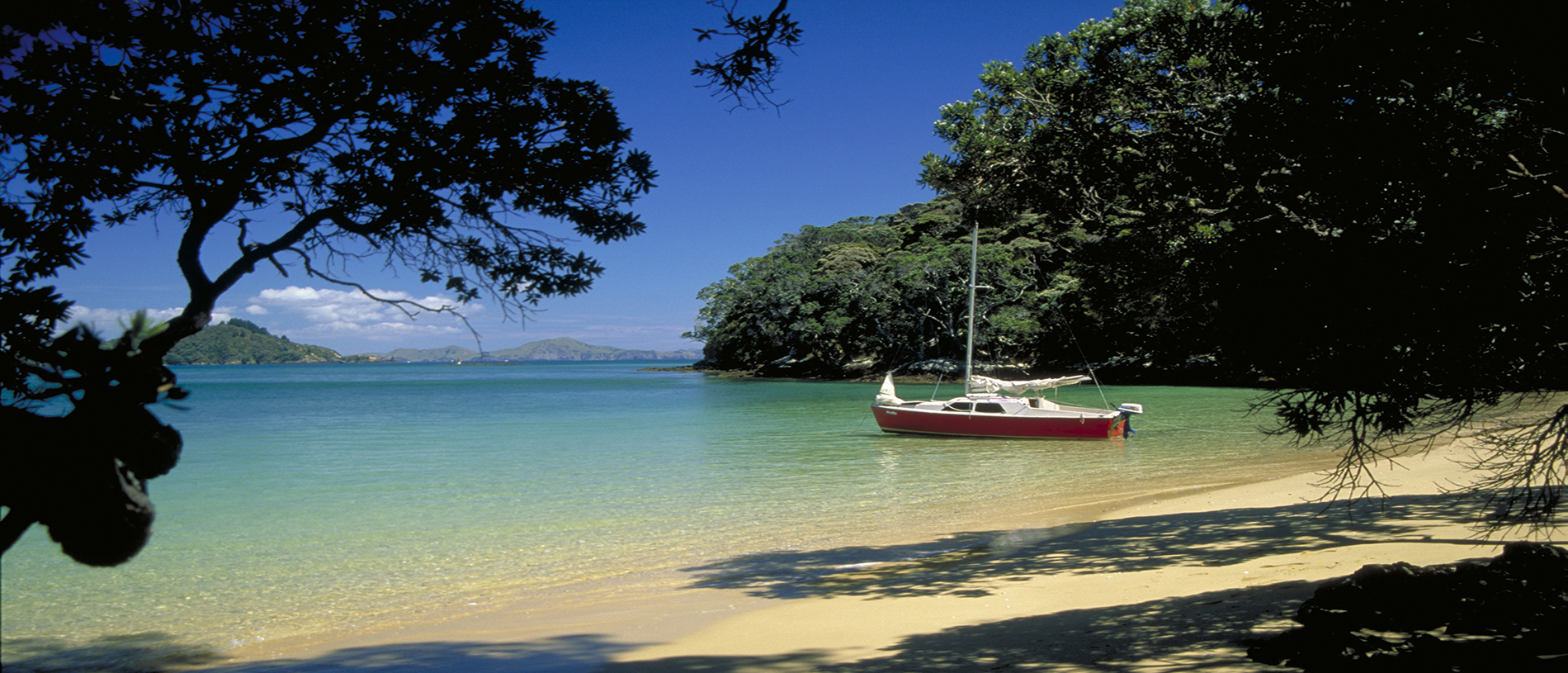
Loved by the locals: Bay of Islands
From impressive views and fascinating cultural history to chocolate treats and hidden beaches, we pick the best spots to visit in the Bay of Islands.

If you are looking for a sense of history in New Zealand, it lies here.
Despite many centuries of Māori habitation and 200 years of European settlement, the Bay of Islands remains largely undeveloped, its heritage offset by its natural beauty.
Captain James Cook was being pragmatic when he called it the Bay of Islands, but Māori called it Ipipiri, meaning many places – to fish, swim, settle, enjoy the bounty.
Some say there are nearly 150 islands, large and small, around the bay, mainly scattered along the southeastern shoreline. Some suggest there are only around 80 above sea level. However many, this largely undeveloped paradise, with its subtropical climate and plentiful resources, was a stronghold of the Ngāpuhi Māori, and one of the earliest sites of European contact and settlement.
For such a beautiful place, the Bay of Islands has a bloody history of conflict. Fought over by local Māori, it was the jumping-off point for power-hungry chief Hongi Hika during the Musket Wars of the early 1800s. Then the British settlers became the target of the wrath of the Tangata Whenua, with the Northern Wars fought between different Ngāpuhi factions and the British forces in the 1840s. Kororāreka, today’s peaceful town of Russell, then the fifth-largest European settlement in New Zealand, was sacked and burnt in 1845, and bullet holes remain in its pretty Christ Church.
After the first European explorers came traders, whalers and missionaries, in search of timber, oil and souls. The buildings of the Kerikeri and Waimate North Church Missionary Society stations are among the oldest remaining in this country, their longevity belying their intensely fragile beginnings in a largely unknown country.
The main road has now been diverted away from Kerikeri’s Stone Store (built in 1832), returning peace and dignity to this old building and the timber mission house adjacent to it. A stone’s throw away are the remains of Hongi Hika’s Kororipo pā, a reminder of the time when Europeans were aliens in a Māori world, rather than being the dominant culture.
On the northern side of the bay, a stone Celtic cross marks the site where the first hopeful Christians made camp; an interpretative trail now leads down from the visitor centre on the hill above, opened to commemorate the bicentennial of the site in 2014.
Because of its history of contact between the races, the Bay of Islands was also chosen as the site where a treaty would be drawn up and signed between British and Māori.
The British colony of New Zealand was officially formed on February 6, 1840, as a selection of Māori chiefs put quill to paper at the Georgian-style residence of Lieutenant-Governor William Hobson. The treaty remains a bone of contention nearly 180 years later, but the Treaty House and grounds have been preserved for posterity, and a new Museum of Waitangi opened in early 2016 means the discussion around this treaty, and this place, continues.
Paihia is the main tourist town on the waters of the bay, and the departure point for many tourist trips, but it is the small settlement of Russell, across the water, that wins the hearts of most visitors. Once a hard-drinking party town for seagoing whalers on shore leave, known as the Hellhole of the Pacific, it is now a pretty shadow of its former self, with its streets of old cottages and fringe of pōhutukawa.
The Catholic mission house here, Pompallier, has been restored to reveal its origins as a tannery, disclosing the mud-brick construction at its core and making it more than a mummified museum.
At night, don’t be surprised if you hear the shriek of the kiwi: the area around the township is a kiwi-protection zone. Cheeky weka and coveys of introduced California quail are also frequent sights.
The bay’s waters remain bounteous, though today visitors come to admire the whales, not to hunt them. Huge pods of dolphins frequent the fish-rich waters, as well as larger visiting cetaceans. The warm waters also attract game fish and over summer the day’s catch is often weighed and displayed at the Russell or Paihia wharves.
American writer Zane Grey named it ‘the angler’s Eldorado’ as early as the 1920s.
Getting out on the water is the best way to see the bay, whether it’s aboard a modern or historical sailing vessel, a fishing charter, dolphin-watch boat, a cruise out to Urupukapuka Island or the Hole in the Rock at Piercy Island at the eastern entrance to the Bay, or just taking the ferry between Paihia and Russell.
The wide-open skies and proximity to so much water mean the views retain the quality of light and sense of a watercolour by Augustus Earle from two centuries earlier. Most importantly, it retains a spiritual quality borne of its long history and natural beauty. Once visited, the Bay of Islands is never forgotten.